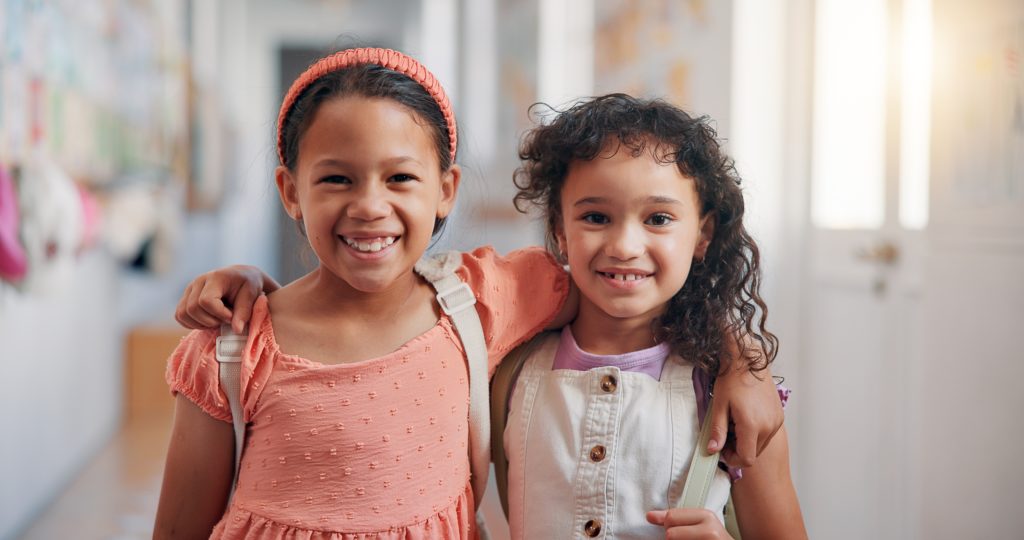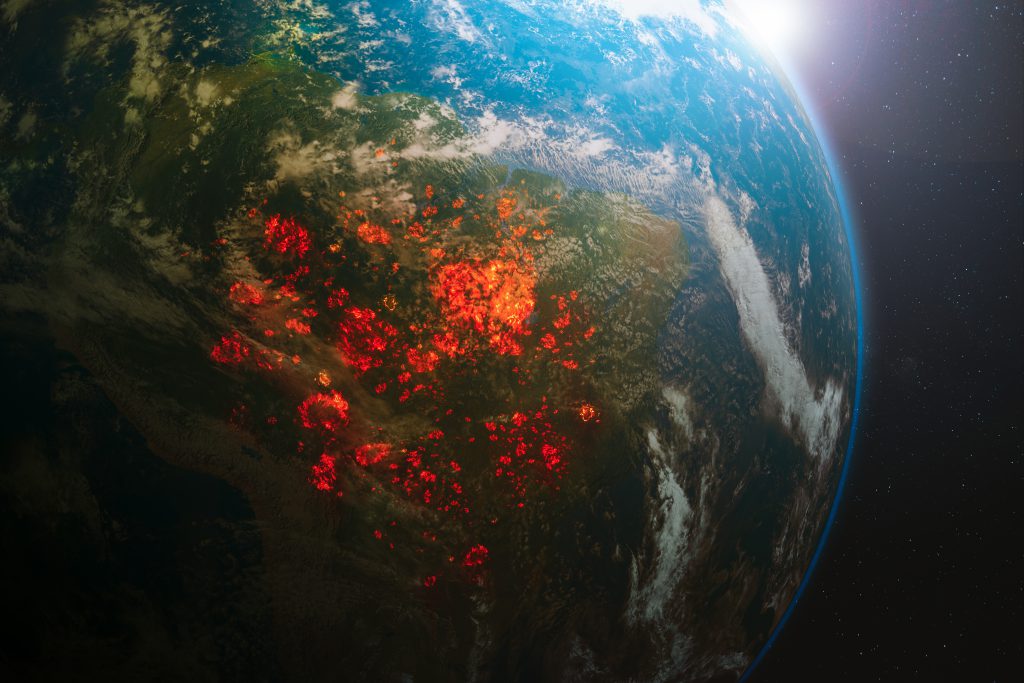Every year on 20 November, the world comes together to celebrate World Children’s Day, a moment to recognise children as rights-holders and to renew our collective commitment to the principles of the Convention on the Rights of the Child. It’s a call to action for every adult and community to make the world safer, fairer, and more inclusive for children. Here are five meaningful ways to mark the day: from learning about children’s rights and amplifying young voices, to raising awareness, engaging communities, and promoting artistic expression.
The importance of celebrating World Children’s Day
The recognition of children’s rights has been anything but straightforward. It has required a long and complex journey, and even today, there are still major challenges in fully implementing the Convention on the Rights of the Child (CRC). For instance, the United States remains the only country that has not yet ratified the CRC.
World Children’s Day was first established in 1954 as Universal Children’s Day and is celebrated on 20 November each year. This date is important as it is the date when the UN General Assembly adopted the Declaration of the Rights of the Child in 1959. It is also the date when the UN General Assembly adopted the Convention on the Rights of the Child in 1989. Since 1990, World Children’s Day also marks the anniversary of the date when the UN General Assembly adopted both the Declaration and the Convention on Children’s Rights (UN, World Children’s Day 20 November, n.d.).
For this reason, a day dedicated to children was established as an opportunity to recognise them as rights holders, to acknowledge the progress achieved for and with children, and to call for further action to protect and fulfil the rights of every child.
Mothers and fathers, teachers, nurses and doctors, government leaders and civil society activists, religious and community elders, corporate moguls and media professionals, as well as young people and children themselves, can play an important part in making World Children’s Day relevant for their societies, communities and nations. It offers an inspirational entry-point to advocate, promote and celebrate children’s rights, translating into dialogues and actions that will build a better world for children (UN, World Children’s Day 20 November, n.d.).
How to celebrate World Children’s Day around the world?
Learning about child rights
Learning about children’s rights is the first step towards becoming a child rights defender. Understanding the history of children’s rights, the reasons behind the creation of a single document that codifies them, and the content of each individual right is essential to respecting and promoting them effectively.
There are several online resources available to explore children’s rights, designed for both adults and children alike. For parents, professionals and teachers, these materials provide valuable support, helping them to promote children’s rights through their work and to contribute to building a broader culture of rights which represents the foundation on which initiatives for children can be built (UNICEF, Discussion Paper, 2021).
For children, there are many child-friendly versions of the CRC that guide them in discovering this important instrument through games, creative and hands-on activities, and reading suggestions. These materials use age-appropriate language and are available in several languages (Barnasáttmáli, n.d.). For instance, some educational organisations have developed kits with creative classroom activities to help children understand their rights in engaging, age-appropriate ways.
Another example is related to the “National Children’s Month” initiative organised by the Department of Education of the Philippines in November 2021. The focus of the initiative was on children’s rights to survival, development, protection, and participation promoted through a series of weekly themed activities.
These included documentary screenings, play-based learning sessions, and webinars such as the “Conference on Digital Parenting: Webinar on Digital Well-being”. The programme culminated with the “Third National Summit on the Rights of the Child in Education”, where children themselves contributed to discussions on rights-based education across the country (Republic of the Philippines, 2021).
Raising awareness on children’s rights challenges
The fact that children’s rights have been codified in a single legal instrument does not mean that there are no longer any gaps or challenges in their implementation. Awareness-raising initiatives on the challenges related to children’s rights around the world emphasise the importance of recognising the current situation, identifying areas for improvement based on concrete data, and providing recommendations to decision-makers that can help guide effective action.

Awareness campaigns can be conducted online through social media or organised as seminars and conferences that explore specific aspects of children’s rights, presenting up-to-date information and evidence. This could be done through a seminar in person, a webinar, or a digital campaign through the main social media platforms.
For example, recent reports have highlighted how climate change disproportionately affects children and young people in regions such as the Middle East, underlining the need to involve them in climate-related decision-making (Sahakyan, 2023). At the local level, the Municipality of Padua in Italy took the opportunity to publish a position paper emphasising the importance of ensuring rights for children from same-sex parent families (Comune di Padova, 2024).
Giving children a seat at the decision-makers’ table
World Children’s Day is also a chance to amplify the voices of children everywhere, allowing them to express their concerns, share their dreams for a better future, and drive real change. For instance, what would children do if they were decision-makers? Oxford Education asked pupils from two primary schools which laws they would pass if they were the Prime Minister for a day (Oxford Education, 2015).
Similarly, the BBC asked children at St George’s Church of England Academy in Birmingham what they would do if they were Prime Minister. Their policies included free water, free funerals, building more homeless shelters, and free ice cream (BBC, 2024).
Giving children and young people the opportunity to speak up and to share what policies they would introduce if they held the role of Prime Minister helps to gather their views on what political priorities should be, while also reinforcing the idea that one day, that role could truly be theirs.
Discussions about extending voting rights to children have long been part of the debate. Some countries have chosen to lower the voting age to sixteen, as in the case of Belgium during the latest European elections. Some practitioners, including David Runciman, have even theorised granting voting rights to children as young as six, advocating for the full enfranchisement of children.
In some countries, children and adolescents have been invited to symbolically ‘take over’ leadership roles on World Children’s Day — for example, stepping into the shoes of ministers or local officials for a day to share their perspectives on education and inclusion. They actively participated in a variety of events and working meetings, engaging directly in the decision-making process.
Moreover, the adolescents had the opportunity to ask meaningful questions and to reimagine the education system to ensure access to quality, inclusive education in a world of change and innovation (UNICEF Moldova, 2023).
Giving visibility to World Children’s Day at the local level
Commemorating World Children’s Day also means recognising it in public and symbolic spaces within cities. This is important because, although the CRC is ratified by states, it also entails responsibilities for local administrations and for adults who play key roles in children’s lives, such as parents or guardians, teachers, coaches, and educators.
Initiatives such as those organised by the Municipality of Vicenza in Italy help spread a culture of rights and engage a wide range of stakeholders. For instance, during the 2024 edition, the city planned activities for children in public spaces, human rights-themed projects in local schools throughout the week around 20 November, a national conference on inclusive policies for early childhood services (ages 0–6) aimed at professionals, teachers and public institutions, and a march involving children and families (Comune di Vicenza, 2024).
Other initiatives to be promoted at the local level include the global practice of lighting up landmark buildings in blue on 20 November to show support for children’s rights. In 2019, the Acropolis of Athens, the Empire State Building in the United States, the European Parliament in Belgium, the Shanghai Tower in China, the House of Peoples’ Representatives in Ethiopia, the Panthéon in France, the Rashtrapati Bhavan in India, Petra in Jordan, the Frida Kahlo House in Mexico, the Peace Palace in The Hague, the Panama Canal in Panama, the Monument for African Renaissance in Senegal, the Cristo Rei monument in Timor-Leste, and the Galata Tower and Bosphorus bridges in Turkey all shone blue to mark the day (UNICEF, 2019).
Organising exhibitions, parades and cultural performances
One of the rights recognised in the Convention on the Rights of the Child is freedom of expression, established under Article 13. Among the many ways in which this right can be interpreted is through artistic expression. In this sense, museums and artists can play a key role in promoting this right by organising events, exhibitions and performances inspired by it.
For instance, for the 2023 World Children’s Day, the educational team of the VIVE museum in Italy hosted a special family event at the Museo Centrale del Risorgimento. An animated story guided children and adults to explore words such as “homeland”, “identity”, “future” and “nation” through the lives of the people and heroes who fought for independence and Italian unification. Moving from the museum’s collection of memorabilia, flags, letters, puzzles and manifestos, the young participants used words and pictures to produce their own child rights manifesto to express their ideas, thoughts and hopes for the future (VIVE, 2023).
Celebrating World Children’s Day also means making one’s voice heard. On 19 November 2024, over 150,000 people in the Czech Republic joined the “Bubnovačka”, a nationwide drumming event, to raise awareness of the need to protect children from violence. Participants used whatever they could find — pots, tables, or drums — to make noise in solidarity.
Drumming also took place in Brussels during the 5th meeting of the EU Network for Children’s Rights, held on the same day. Representatives from EU member states and civil society, led by Czech and Slovak delegates, drummed together to show their commitment to keeping children safe (EU, 2024).
Advocating for children’s rights
World Children’s Day happens once per year on 20 November, and it can be celebrated in many different ways. However, it is important to underline how every day should be a good day to promote and implement children’s rights around the world.
The Convention on the Rights of the Child (CRC) identifies right holders, the children, and duty bearers, the adults who international law says have a responsibility to respect, protect and fulfil children and young people’s rights. Duty-bearers are individuals who have a particular obligation or responsibility to respect, promote and realise human rights and to abstain from human rights violations. With regards to the CRC, all adults who work for the state are duty bearers, such as teachers, educators, police and social workers, parents and community leaders (UNICEF UK, 2023).
For this reason, it is important to underline how celebrating World Children’s Day is not only a celebration for children, but also a reminder for adults about their responsibilities towards children. Duty bearers are the ones who translate the principles of the CRC into real-life actions and environments where children can survive, learn, and develop their fullest potential. When these actors recognise their specific obligations and work collaboratively, they help build systems that protect children from harm, promote equality, and ensure that children are heard.

We at Humanium work to promote children’s rights and to support duty bearers in understanding their role and potential to support us in promoting children’s rights. Your support, whether through sponsoring a child, making a donation, or becoming a member or a volunteer, can help keep promoting best practices around the world and advocating for a child-friendly world for every child.
Written by Arianna Braga
References:
Barnasáttmáli (n.d.). CRC in various languages. Retrieved from Barnasáttmáli at https://www.barnasattmali.is/en/the-convention-on-the-rights-of-the-child/crc-in-many-languages, accessed on 4 October 2025.
BBC (2024). What would kids do if they were prime minister? Retrieved from the BBC at https://www.bbc.com/news/videos/cw55w9g6y20o, accessed on 8 October 2025.
Comune di Padova (2024). Comunicato stampa: 20 novembre, in occasione della Giornata Internazionale dei Diritti dell’Infanzia e dell’Adolescenza, dalla Rete Re.a.dy la richiesta di intervento per garantire diritti ai bambini e alle bambine delle famiglie omogenitoriali. Retrieved from Comune di Padova at https://www.comune.padova.it/novita/notizie/comunicato-stampa-20-novembre-occasione-della-giornata-internazionale-dei-diritti, accessed on 8 October 2025.
Comune di Vicenza (2024). Torna la Settimana dei diritti dell’infanzia: il 19 novembre girotondo con le famiglie in piazza dei Signori. Retrieved from Comune di Vicenza at https://www.comune.vicenza.it/Novita/Comunicati/Torna-la-Settimana-dei-diritti-dell-infanzia-il-19-novembre-girotondo-con-le-famiglie-in-piazza-dei-Signori, accessed on 8 October 2025.
EU (2024). Drumming for children’s rights. Retrieved from the EU Children’s Participation Platform at https://eu-for-children.europa.eu/activities-news/latest/drumming-for-childrens-rights_en, accessed on 8 October 2025.
Oxford Education (2015). What would kids do if they were Prime Minister for a day? Retrieved from YouTube at https://www.youtube.com/watch?v=1qYWJarUy7M, accessed on 8 October 2025.
Republic of the Philippines (2021). DepEd celebrates National Children’s Month with activities on children’s rights. Retrieved from the website of the Department of Education of the Republic of the Philippines, at https://www.deped.gov.ph/2021/11/17/deped-celebrates-national-childrens-month-with-activities-on-childrens-rights/, accessed on 12 October 2025.
Sahakyan, A. (2023). “Climate change is disproportionately impacting children in the Middle East” World Vision announces ahead of COP 28. Retrieved from World Vision at https://www.wvi.org/newsroom/jerusalem-west-bank-gaza/climate-change-disproportionately-impacting-children-middle-east, accessed on 4 October 2025.
Save the Children, (n.d). 10 Attività sui diritti dei bambini e dei ragazzi. Retrieved from Save the Children at https://risorse.arcipelagoeducativo.it/percorsi-tematici/10-attivita-sui-diritti-dei-bambini-e-dei-ragazzi, accessed on 12 October 2025.
UN, World Children’s Day 20 November (n.d.). World Children’s Day 20 November. Retrieved from UN at https://www.un.org/en/observances/world-childrens-day, accessed on 4 October 2025.
UNICEF (2019). Iconic landmarks around the world turn blue in symbolic stand for child rights on World Children’s Day. Retrieved from UNICEF at https://www.unicef.org/press-releases/iconic-landmarks-around-world-turn-blue-symbolic-stand-child-rights-world-childrens, accessed on 8 October 2025.
UNICEF Moldova (2023). Teenagers took over the Ministry of Education and Research. Retrieved from UNICEF at https://www.unicef.org/moldova/en/stories/teenagers-took-over-ministry-education-and-research, accessed on 8 October 2025.
UNICEF UK (2023). Language Associated with Rights and Being Rights Respecting. Retrieved from UNICEF UK at https://www.unicef.org.uk/rights-respecting-schools/wp-content/uploads/sites/4/2023/11/RRSA-Vocabulary_Final_Nov-2023.pdf, accessed on 12 October 2025.
UNICEF, Discussion Paper (2021). Child Rights Education with Children Aged 0–6 Years. Retrieved from UNICEF at https://www.unicef.org/media/110081/file, accessed on 4 October 2025.
VIVE (2023). World Children’s Day – VIVE for the Child Rights Manifesto. Retrieved from Vittoriano e Palazzo Venezia (VIVE) at https://vive.cultura.gov.it/en/exhibitions-and-events/world-childrens-day, accessed on 8 October 2025.


